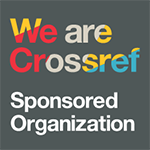Wear-resistant metal coatings formed by magnetron sputtering on fire-proof fabric materials
DOI:
https://doi.org/10.33408/2519-237X.2022.6-4.391Keywords:
magnetron sputtering, metal coating, fabric material, adhesion, friction coefficient, friction track widthAbstract
Purpose. Study of the adhesive strength and wear resistance of metal coatings formed by magnetron sputtering on fire-proof fabric materials.
Methods. Tribological tests were carried out on a JLTB-02 tribometer. The adhesive strength of the coatings was evaluated using a measurement technique using adhesive tape with a lattice notch. The wear tracks on the coatings were examined using a Hitachi S-900 scanning electron microscope.
Findings. The adhesive strength and tribological properties of aluminum and brass coatings deposited by magnetron sputtering on arcelon with various impregnations are investigated. It is determined that the use of impregnation, regardless of the composition, increases the adhesive strength of coatings formed by magnetron sputtering. The influence of both the composition of the chemical impregnation and the coating material on the tribological characteristics of the studied samples has been established. It is established that aluminum coatings are characterized by lower values of the coefficient of friction and the width of the friction tracks than for brass coatings, which indicates their higher wear resistance.
Application field of research. The presented research results can be used in the manufacture of fire-retardant overalls necessary for firefighters, rescuers, as well as for oil and gas industry workers, welders, metallurgists and the military.
References
Sabirzyanova R.N., Krasina I.V. Assortiment i oblast' primeneniya ognestoykikh tekstil'nykh materialov [The range and scope of fire-resistant textile materials]. Vestnik Kazanskogo tekhnologicheskogo universiteta, 2014. Vol. 17, No. 22. Pp. 101‒105. (rus). EDN: https://elibrary.ru/TALMOX.
Kutepov A.M., Zakharov A.G., Maksimov A.I. Vakuumno-plazmennoe i plazmenno-rastvornoe modifitsirovanie polimernykh materialov [Vacuum-plasma and plasma-solution modification of polymer materials]. Moscow: Nauka, 2004. 496 p. (rus)
Gorberg B.L., Ivanov A.A., Mamontov O.V., Stegnin V.A., Titov V.A. Modifitsirovanie tekstil'nykh materialov naneseniem nanopokrytiy metodom magnetronnogo ionno-plazmennogo raspyleniya [Modification of textile materials by nanocoating by magnetron ion-plasma sputtering]. Rossiyskiy khimicheskiy zhurnal, 2011. No 3. Pp. 7‒13. (rus)
Kelly P.J., Amell R.D. Magnetron sputtering: a review of resent developments and applicartions. Vacuum, 2000. Vol. 56, Iss. 3. Pp. 159–172. DOI: https://doi.org/10.1016/S0042-207X(99)00189-X.
Berlin E.V., Dvinin S.A., Seydman L.A. Vakuumnaya tekhnologiya i oborudovanie dlya naneseniya i travleniya tonkikh plenok [Vacuum technology and equipment for applying and etching thin films]. Moscow: Tekhnosfera, 2007. 176 p. (rus)
Dostanko A.P., Bordusov S.V, Svadkovskiy I.V [et al.]. Plazmennye protsessy v proizvodstve izdeliy elektronnoy tekhniki [Plasma processes in the production of electronic products]; in 3 volumes. Minsk: FUAinform, 2001. Vol. 2. 244 p. (rus)
Neorganicheskaya khimiya [Inorganic Chemistry]: a textbook for higher educational institutions: in 3 volumes. Edited by Yu.D. Tret'yakov. Moscow: Akademiya, 2004. Vol. 1: Fiziko-khimicheskiye osnovy neorganicheskoy khimii [Physico-chemical fundamentals of inorganic chemistry]. 240 p. (rus)
Published
How to Cite
License
Copyright (c) 2022 Latushkina S.D., Posylkina O.I., Artemchik A.G., Sechko I.A.

This work is licensed under a Creative Commons Attribution-NonCommercial 4.0 International License.




















